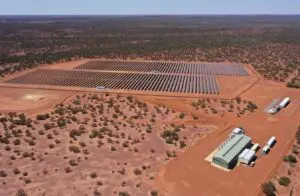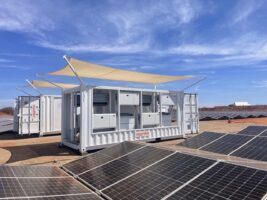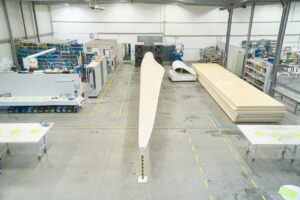An international group of researchers have developed a new bifacial solar technology that they claim can not only generate power with greater efficiency than traditional solar, but at significantly less cost than existing solar panels.
Scientists from the University of Surrey in England, working with colleagues at the University of Cambridge, the Chinese Academy of Sciences, Xidian University, and Zhengzhou University, have developed a flexible perovskite solar panel that use electrodes made of tiny carbon nanotubes.
These are able to generate more power with greater efficiency and at a significantly reduced cost.
Using single-walled carbon nanotubes as both front and back electrodes – offering high transparency, conductivity, and stability – the bifacial perovskite solar cells boast a bifaciality (the ratio of rear efficiency in relation to front efficiency) of over 98% and a power generation density of over 36%.
Nanotubes such as the ones used here – measuring only 2.2 nanometres across, slightly thinner than a strand of human DNA – provide improved electricity conductivity, stability, as well as greater mechanical flexibility and durability.
The researchers also demonstrated an “exceptional” power-per-weight of 73.75Wg, which they claim is “the highest value so far” seen.
Power generation was notably higher compared to monofacial silicon cells, with a power output of approximately 35kWh during sunnier periods, compared to approximately 28kWh for monofacial cells.
Even in winter, the bifacial cells “could harvest albedo energy efficiently,” producing approximately 13kWh, compared to 11kWh for monofacial silicon cells.

Over the long term, bifacial solar cells made with nanotube electrodes are projected to generate approximately 300kWh of electricity per year over a 26-year period. Conversely, monofacial silicon cells are only able to deliver around 260kWh per year.
Maybe most importantly, even more than the physical properties of the technology, the researchers demonstrated that “the material cost of an all-carbon-electrode-based bifacial PSC is about 70% lower than that of a monofacial device”.
“Therefore, our results indicate that all-carbon-electrode-based bifacial PSCs offer a promising route to achieve efficient, low-cost and long-term stable devices compared to monofacial devices,” they added.
“The world cannot decarbonise without solar power,” said Professor Ravi Silva, director of the University of Surrey’s Advanced Technology Institute (ATI) and head of NanoElectronics Centre.
“Yet that requires much cheaper solar energy than is currently available. Panels that can absorb the sun’s energy on both sides are a great way to make the technology more cost-effective.
“We have produced arguably the highest efficiency single junction solar cell to date. Our panels cost 70% less to make than a normal one-sided solar panel. This could significantly modify the market and simplify the architectures required based on perovskite solar cells.”










